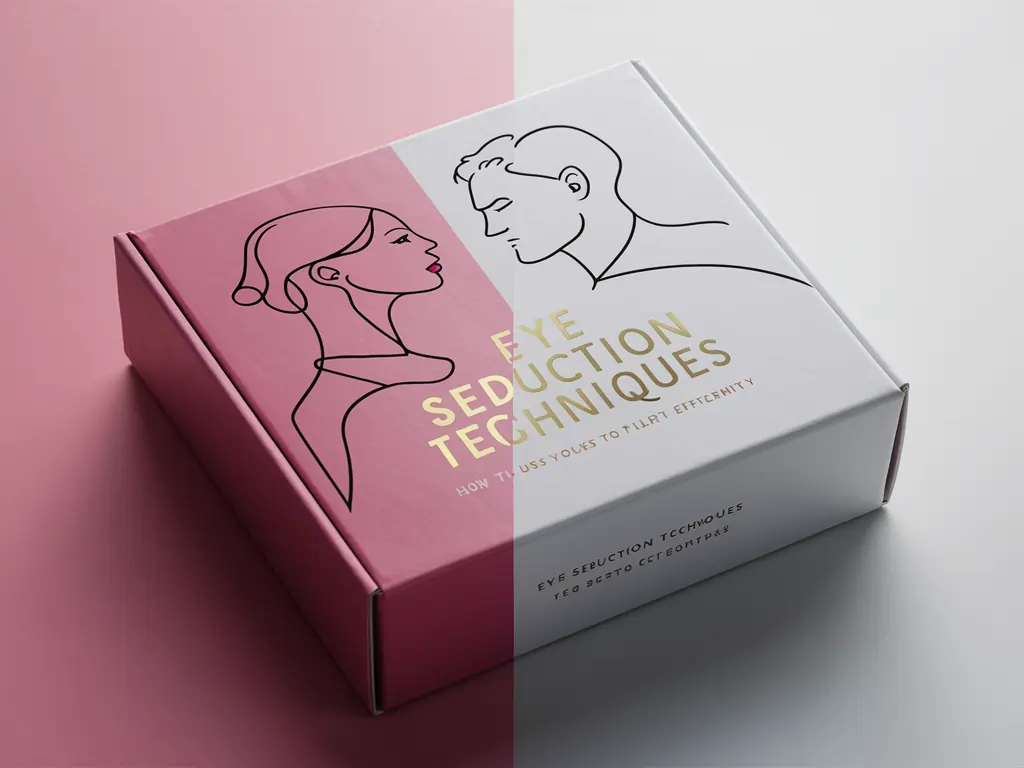How to Present Yourself: 11 Powerful Body Language Hacks

Appearing genuinely elegant isn’t just about your clothes or how you style your hair. It is a voice of your body language. Body language is a powerful tool that communicates volumes about you before you speak. It can reveal your true feelings, intentions, and, yes, even your elegance. Elegance is more than just a look; it’s a state of mind reflected in your actions. It shows your self-confidence, grace, and sophistication. And guess what? Confident body language hacks can help you project the image of elegance. In this article, we will explore 11 body language hacks that make you look elegant. So, please stick around, and let’s go through these subtleties together.
1) The Power of Posture
Good posture is a key element in conveying elegance. It communicates confidence, grace, and authority. When you see someone slumping over, you don’t immediately think of them as elegant. So, how can you improve your posture?
- Firstly, imagine a string attached to the top of your head, pulling you upwards. This simple visualization helps align your neck and spine, instantly improving your posture.
- Secondly, pull your shoulders back. Not only will this make you look taller and slimmer, but it will also express confidence.
Research published in the journal Psychological Science found that adopting an upright posture can lead to increased feelings of power and confidence (Carney, Cuddy, & Yap, 2010).
Another study published in Health Psychology showed that good posture can positively influence mood and energy levels (Peper, Lin, & Harvey, 2017).
Maintaining good posture is a habit that can be developed with consistent practice. At first, it may feel awkward, but over time, it will become second nature. And when it does, you’ll look more elegant and confident.
2) Master the Art of Eye Contact
Eye contact is a powerful tool that can make you appear genuinely elegant. When done right, it exudes confidence and creates a connection with others. So, how can you master the art of eye contact?
Research published in the Journal of Personality and Social Psychology suggests that mutual gaze, or eye contact, is associated with feelings of liking and attraction between individuals (Kleinke, 1986).
A study in the European Journal of Social Psychology found that eye contact can enhance perceptions of credibility and trustworthiness (Drolet & Morris, 2000).

- Maintain eye contact during conversations, but remember to avoid staring. Holding a soft gaze and occasionally breaking contact keeps it natural and comfortable for both parties.
- Make a conscious effort to be present and engaged in conversations. This will not only make you appear more elegant but also make the other person feel valued and listened to.
Remember, elegance is not just about what you wear; it’s also about how you make others feel. Maintaining strong and genuine eye contact is a key aspect of projecting elegance.
3) Graceful Movements
Elegance is often associated with grace, and how you move plays a significant role in conveying this quality. The secret to moving gracefully is taking your time. Rushing can make you appear clumsy or anxious, while slow and deliberate movements communicate control and elegance.

Think of a sloth’s movement. Although slow, they never appear rushed; they take their time and get where they need to be with minimal effort. Whether you’re walking into a room or picking up a coffee cup, aim to make your movements smooth and deliberate to project an image of elegance.
Research published in Psychological Science suggests that individuals who move slowly and deliberately are perceived as having more power and higher status (Foulsham & Kingstone, 2017).
A study in the Journal of Nonverbal Behavior found that slow movements are associated with perceptions of confidence and competence (Weisfeld & Beresford, 1982)
4) The Elegance of a Genuine Smile
A genuine smile has the power to light up your face, convey warmth, and make you appear friendly and approachable—all qualities associated with elegance. So, how can you ensure your smile is genuine?
- Focus on turning up the corners of your mouth rather than forcing a smile.
- Engage your whole face, especially your eyes. A genuine smile brightens your eyes and gives your face a warm and inviting expression.

Research in the Journal of Nonverbal Behavior indicates that genuine smiles, known as Duchenne smiles, are associated with positive social outcomes and perceptions of warmth (Ekman, Davidson, & Friesen, 1990).
Studies have shown that smiling can activate neural circuits associated with reward processing and positive emotions, leading to increased feelings of happiness (Kimet al., 2018).
Elegant people are not aloof or cold; they’re warm, inviting, and engaging. Let your smile be a reflection of that inner elegance.
5) A Firm Yet Gentle Handshake
Your handshake is often the first physical contact you have with someone, making it an essential aspect of your overall impression. To convey confidence and respect, aim for a firm yet gentle handshake.
- Match the pressure of the other person’s grip. Be mindful not to grip too tightly, as it can come across as aggressive.
- Practicing your handshake might feel silly, but it’s worth it. A confident and well-executed handshake can make a lasting impression on others.
Research published in the Journal of Personality and Social Psychology suggests that handshake quality influences the initial impressions formed during social interactions (Chaplin et al., 2000).
A study in the Journal of Applied Psychology found that a firm handshake is positively correlated with extraversion and openness to experience (Stewart et al., 2011).
Remember, your handshake is an opportunity to showcase your elegance and leave a positive impression on others.
6) The Power of Active Listening
Active listening is more than just hearing; it’s about being present and showing genuine interest in what the other person says. By actively listening, you make others feel valued and understood, qualities that are undeniably elegant.
Research in the International Journal of Listening suggests that active listening behaviors, such as nodding and paraphrasing, can enhance interpersonal communication and relationship satisfaction (Drollinger et al., 2006).
Studies have shown that active listening is associated with increased empathy and understanding between communication partners (Davis & Hayes, 2011).
- Nod occasionally, make affirming sounds, and paraphrase their words to confirm understanding. This shows that you’re engaged in the conversation and genuinely interested.
- Avoid interrupting and keep your phone away. Give your full attention to the person speaking.
Remember, elegance is not just about what you say or how you look; it’s about how you make others feel. Active listening is a powerful tool to convey respect and empathy.
7) Embracing Silence
Silence can be uncomfortable, but it has an understated elegance. Instead of rushing to fill every quiet moment with conversation, embrace the power of silence.
Research published in Psychological Science suggests that pauses in speech can enhance speaker credibility and persuasiveness (Bavelas et al., 1986).
Studies have shown that embracing silence during conversations can lead to deeper reflections and more thoughtful responses (Levin et al., 2016).

- Take a deep breath, maintain your posture and eye contact, and let the silence linger.
- Use silence as an opportunity for reflection and thoughtful responses. It allows you to avoid dominating conversations and gives others a chance to contribute.
Embracing silence shows confidence and composure, two key elements of genuine elegance.
8) Maintaining Personal Space
Respecting personal space is crucial in displaying elegant body language. Invading someone’s personal space can make them feel uncomfortable and can appear aggressive or disrespectful.
Research in the Journal of Nonverbal Behavior indicates that violations of personal space can lead to feelings of discomfort and anxiety (Aiello & Aiello, 1974).
Cultural differences in personal space norms have been documented, highlighting the importance of respecting individual preferences and boundaries (Hall, 1966).
- Be aware of the ‘personal bubble’ around individuals and maintain a respectful distance for comfort and boundaries.
- Keep in mind that personal space can vary based on cultural norms and personal preferences. As a general rule, maintaining an arm’s length distance when interacting with someone is considered respectful.
Respecting personal space shows that you are considerate and aware of others’ needs, a quality that is fundamental to elegance.

9) Consistency is Key
Consistency is vital when it comes to portraying elegance through body language. Elegance is not a mask you wear for certain occasions; it’s a way of being. Consistently carrying yourself with grace, respect, and confidence in every situation solidifies your image of elegance.
Research in Social Behavior and Personality suggests that consistent behavior contributes to perceptions of reliability and trustworthiness (Alloy & Abramson, 1979).
Studies have shown that consistency in behavior enhances interpersonal relationships and reduces uncertainty in social interactions (Berg et al., 2018).
While it may take time and conscious effort to develop these habits, they will eventually become second nature. Your elegance will effortlessly shine through when you consistently practice these body language hacks.
10) Dress and Grooming
Your dress and grooming play a significant role in conveying elegance. Select clothes that fit well, suit your body type, and align with your style. Consider colors, patterns, and appropriateness for different occasions.
Research in the Journal of Applied Psychology suggests that clothing can influence perceptions of competence, trustworthiness, and professionalism (Tuttle & Kurtzberg, 2007).
Studies have shown that grooming behaviors, such as cleanliness and neatness, are associated with positive first impressions and social attractiveness (Jacob & Gueguen, 2013).
- Choose accessories that complement your outfit without overwhelming it, such as jewelry, watches, belts, etc.
- Pay attention to grooming, including neat hair, clean nails, and polished shoes. These details contribute to a well-put-together appearance.
How you dress and present yourself significantly influences how others perceive you. It’s a means of self-expression and can boost your confidence and how elegantly you carry yourself.
11) Mindfulness
Being aware of your body language and how you carry yourself in different situations is essential. Mindfulness refers to being present and fully engaged in the current moment. It involves paying attention to your thoughts, feelings, bodily sensations, and environment without judgment.
Research in Personality and Individual Differences suggests that mindfulness practices are associated with increased self-awareness, emotional regulation, and stress reduction (Brown & Ryan, 2003).
Studies have shown that mindfulness interventions can improve interpersonal communication skills and enhance relationship satisfaction (Carson et al., 2004).

- Practice mindfulness through meditation, focused breathing exercises, or simply being conscious of your thoughts and sensations in everyday activities.
- Cultivate awareness of your experiences to ensure your movements and expressions align with the elegance you aim to convey.
The essence of genuine elegance goes beyond external appearances and body language. It’s deeply rooted in self-awareness, confidence, and respect for others. By cultivating qualities like empathy, respect, and self-confidence, your exterior demeanor will naturally mirror elegance.






